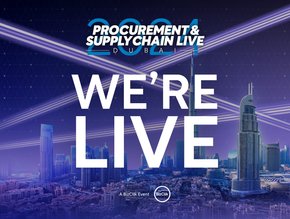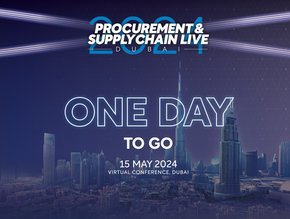How can we Solve a Problem like Scope 3?

Unless you’ve been living under a rock, you’ll have noticed that Scope 3 has become one of the most extensively-debated topics within the wider sustainability discussion.
While Scope 1 covers a company’s direct emissions and Scope 2 is focused on energy usage, Scope 3 covers the greenhouse gas emissions (GHG) from upstream and downstream activities in a company’s value chain.
Conversation has amplified in recent years as regulatory bodies consider implementing sweeping new rules and directives which would require businesses to report their Scope 3 emissions.
However, in March, the US’ Securities and Exchange Commission (SEC) opted to shelve its version of these plans more than two years after they were initially proposed – despite the fact that these emissions account for a significant chunk of a typical organisation’s overall pollution.
Across the Atlantic, the European Commission officially adopted the European Sustainability Reporting Standards (ESRS) in 2023. This means firms must begin disclosing their Scope 3 emissions between 2024 and 2028, with the timeline depending on the size of their workforce and turnover.
Naturally, Scope 3 was discussed at length during Sustainability LIVE: Net Zero, a groundbreaking event hosted by our sister title, Sustainability Magazine, which brought together executives and experts from some of the biggest companies in the world.
The Scope 3 Forum was dedicated to this important topic and featured insight from:
- Patrick Linighan, Chief Sustainability Officer at Clyde & Co
- Javier López Gómez, Global Head of Corporate Sustainability at SGS
- Mark Jones, Chief Sustainability Officer at THG
The dominance of Scope 3
Linighan began the discussion by shedding light on the Scope 3 emissions being produced by his employer, Clyde & Co, a world-leading law firm with a presence across the globe.
He revealed around 95-96% of the company’s total emissions could be categorised as Scope 3.
“What that really shows is that focusing on Scope 1 and Scope 2 is insufficient for an organisation like ours,” says Linighan.
“If we can measure and manage our Scope 3 emissions, we can gain insights into our emissions hotspots; we can prioritise reduction strategies; we can evaluate supplier sustainability performance; we can inform decision-making in procurement. But, perhaps most importantly, we can encourage innovation for more sustainable products.”
Gómez and Jones disclosed that their own workplaces’ Scope 3 output was at least 90%, demonstrating an immense need to tackle a growing problem.
“Our supply chain is very diverse – everything from agriculture to the traditional retailers,” adds Jones, representing e-commerce group THG.
“We've been looking at tackling Scope 3 in all our purchased goods suppliers across beauty and nutrition, as well as in our transport and distribution.”
Scope 3 complications
Of course, actually addressing the proliferation of Scope 3 emissions throughout the supply chain is far from straightforward.
Gómez points to the diverse nature of categories within Scope 3, both upstream and downstream, as presenting a significant obstacle.
“That complexity, scalability and data availability is definitely one of the challenges because we’re talking about waste, employee commuting or end customer use if we look downstream,” he continues.
“Then there is obviously the limited control because Scope 3 lies outside direct control. It depends on the clients, suppliers and final end users of the company’s product.”
Scope 3, by its very nature, cannot be solved by a single company in isolation.
Gómez was therefore keen to highlight the opportunities that exist when it comes to increased engagement and collaboration with stakeholders.
“This needs to be tackled in a collaborative way that leads to collective action,” he goes on. “In our case, it’s perfect for starting open discussions with key suppliers and leads to conversations beyond Scope 3 – about digitalisation and innovation.”
Striking the right balance
Last year, Clyde & Co implemented a set of sustainable procurement principles which, in effect, encourage suppliers to adopt its sustainability targets as a minimum, before they become obligatory in three years’ time.
Linighan divulges that this came about as a result of a major client imposing decarbonisation goals into its legal service contract, dictating the contract would end if they are not met.
He explains: “This particular client was unique when they imposed these goals in 2022, but it's no longer unique. We have something in the region of 15% of global revenue tied into short-term decarbonisation goals.
“So, to a degree, we have to be a bit more authoritarian with our own supply chain. We have to strike that balance of bringing people on the journey, but also we also have to be a little bit more imposing in how fast they start that journey.”
Continuing on the theme of collaboration, Jones emphasises the importance of striking the right balance between ‘carrot and stick’ when engaging with suppliers.
He concludes: “One thing we’re looking at is what opportunities there are with our suppliers to look at innovative products or services, but, in order to create innovation, you have to create trust.
“What’s been really successful is bringing in not just suppliers, but also our internal teams. You have to involve the commercial teams – the buying or procurement teams – in regards to what the strategy looks like.”
******
Check out the latest edition of Supply Chain Magazine and sign up to our global conference series – Procurement and SupplyChain LIVE 2024.
******
Supply Chain Digital is a BizClik brand.







